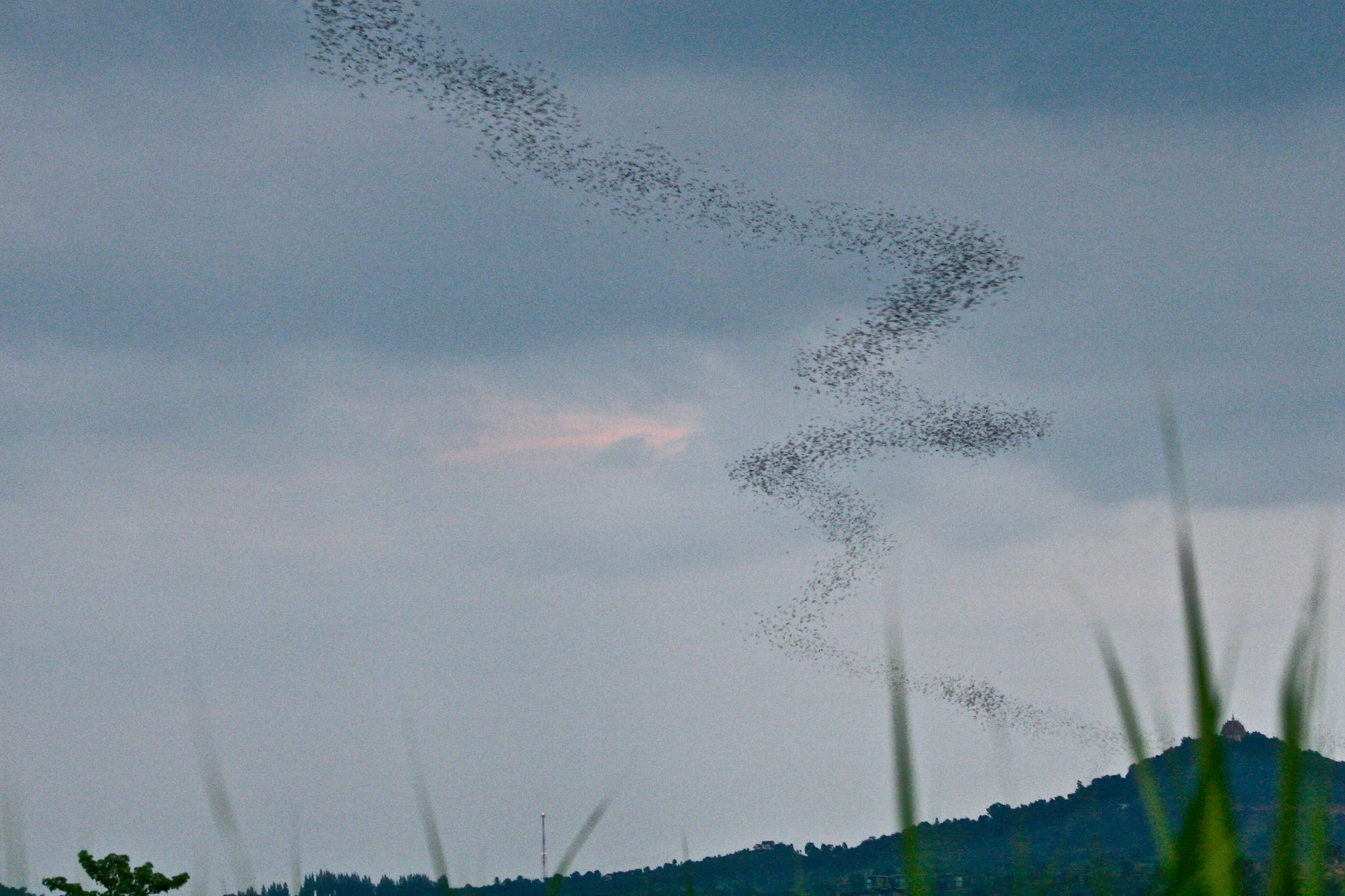A Refuge That No One Can Touch
Tricycle’s founding editor reflects on her path to Buddhism. The post A Refuge That No One Can Touch appeared first on Tricycle: The Buddhist Review.

Helen Tworkov grew up in a family of artists where art was considered the religion. Yet from an early age, she sought another kind of religion—one that would address deeper questions of the nature of truth and the self. After traveling throughout Asia and experimenting with a variety of New Age practices, Tworkov eventually arrived at Buddhism—and went on to found The Tricycle Foundation in 1990.
In her new book, Lotus Girl: My Life at the Crossroads of Buddhism and America, she uses her own spiritual journey to explore how Buddhism has developed in the West over the past sixty years. Set against the cultural backdrop of the Vietnam War and the American counterculture, the book offers a portrait of Tworkov’s search for meaning and truth as she travels through Japan, India, and Nepal and encounters the great Buddhist luminaries of her time, including the Dalai Lama, Pema Chödrön, Chögyam Trungpa, Dudjom Rinpoche, and Yongey Mingyur Rinpoche.
In a recent episode of Tricycle Talks, Tricycle’s editor-in-chief, James Shaheen, sat down with Tworkov to talk about what first brought her to Buddhism, the dangers of exoticizing Buddhist traditions, the radical nature of Buddhist teachings in a relentlessly capitalist economy, and how she understands the bardos of old age and death. Read an excerpt from their conversation below, and then listen to the full episode.
I’d like to ask you a bit about your upbringing. You grew up in a secular household, and religion was not a part of your family life, and certainly not Buddhism. So what was your understanding of religion back then? I grew up in a family of artists. This was the 1950s, and my understanding was that art was the religion and that the artists were the high priests. I grew up in the kind of family that many people came to New York to live like, and it didn’t work for me. People came to New York because they wanted to be in the art world—they wanted to be around artists; they venerated artists. What I saw was artists’ behavior that was not so great. I wasn’t looking at art; I was looking at human beings with very common behavior patterns, which is to say that they were impatient and greedy and harsh and angry and loving and everything [in between]. It wasn’t a kind of sanitized version of art or artists. I learned early on that people who made good art were not necessarily good people. I had to move on to another kind of religion.
You begin the book with the story of the Vietnamese Buddhist monk Thich Quang Duc, who set himself on fire in 1963. Can you tell us about that event and the impact it had on you? Oddly enough, everyone who ever saw that photograph never forgot it, and they usually misidentify it as a Buddhist monk protesting the American presence in Vietnam. That’s not quite true. What Quan Duc was protesting was the crackdown on Buddhist clergy by the fundamentalist Catholic prime minister, Ngo Dinh Diem. About 10 percent of the country at the time was Catholic, and about 90 percent was Buddhist. Diem decided to fly the papal flags of Rome in this 90 percent Buddhist country, and his activities towards the Buddhist clergy and monasteries were becoming increasingly aggressive. In 1963, Thich Quang Duc sat down in a very centrally located part of what was then called Saigon and set himself on fire to draw international attention to what was going on with the Buddhist clergy, and he did a sensationally fantastic job of doing that.
Right, but the politics of it weren’t what had such an immediate impact on you. What was it that struck you? What struck me was how does somebody sit upright in perfect meditation posture while they’re burning up? How does that happen? Now, Diem’s cronies tried to spread the idea that he must have been drugged or that he was taking some type of painkillers. But what we saw visually from the photographs and videos was a Buddhist monk in robes sitting in perfect meditation posture while he burned to death. There was something about what we were seeing, something about his body and his mind that I had never seen before.
Now, I came from a family that prized intellectual knowledge as the highest version of what the mind could do. I was looking at a mind that was so far away from that. I had no idea what was going on, but I certainly wanted to know more. That’s what attracted me. That’s what caught me.
Throughout the book, one experience after the other jars you into an awareness that who you are isn’t necessarily who you thought you were, and in 1972, you experienced a traumatic miscarriage, which pushed you to seek a form of spiritual practice. Could you say something about that experience? What were you seeking as a result? I had been in Asia for two years before that happened, and at that point I had no sense that Buddhism could be taken out of Asia. I didn’t understand its capacity for borderless understanding or its universality. And I didn’t know how to approach anything called practice.
What happened with the miscarriage was it was a late-term miscarriage, and I just could not shake the pain. I didn’t know how to get out of it, and I got more and more depressed, and my husband and I became further and further apart. He was, at some point, quite understandably ready to move on, and I just couldn’t. I was just stuck. And then I began thinking about some kind of spiritual practice, but at that time I thought that it was somehow embarrassing or insulting to the religion to have to start off from this low state of confusion and self-hatred and despair. I didn’t understand that was the only place to start from. I thought there was some elevated place that you started from and then you just went up from there—I didn’t get that that was the only starting point.
You did try a few New Age practices, but then you serendipitously came across Chögyam Trungpa Rinpoche. What drew you to Trungpa Rinpoche and to Tibetan Buddhism? I had been reading Trungpa Rinpoche, so I knew who he was. I knew that he was brilliant, but I also knew about his reputation for drinking and sleeping with his students. I had tried several New Age practices, and at some point, I thought that I should try something that was more traditional, and however crazy Trungpa Rinpoche’s reputation was, he was very much within a very traditional way of teaching. I signed up for a seminar that he was holding on Milarepa.
Neither Trungpa Rinpoche nor his teachings were particularly attractive to me at that time, but the big takeaway from that weekend was the concept of lineage, that this person who was dressed in a three-piece suit and whose glass beside his table was reportedly filled with sake could be the interpreter, the translator, the transmitter of this great Tibetan 11th-century saint, Milarepa. So we’re talking about a thousand-year history here, and we’re talking about the transmission of mind-to-mind teachings. So it wasn’t the inheritance of blood and flesh; it was the inheritance of mind understanding. And the possibility that this lineage could be so robust, so energized, and so echoed by living masters gave the lineage itself a kind of credibility that reduced the emphasis on any one person in it. Up until then, I had a hard stance against teachers. I didn’t want a guru. Gurus were terrifying to me. But that softened my stance against teachers because it made them part of a much bigger fabric.
You eventually found Dudjom Rinpoche. Can you tell us who he was and what was so striking to you about the way he moved through the world? I always feel extremely self-conscious talking about Dudjom Rinpoche because when I look back, I was barely what you would call a student. I didn’t know anything! My own mind was too clogged up and cluttered and opaque. But what I could see or what I could feel [of Dudjom Rinpoche], there was no place to land your mind. If I meet you, we try to figure out who we are. Who is this person? Who are they in the world? What do they do? Where do they come from? Where did they go to college? There are all these questions that we ask to try to set the coordinates of who they are. With Dudjom Rinpoche, it was like talking to the sky. It was like he communicated a quality of a non-referential mind so you couldn’t reference him and he couldn’t reference you in any normal way of what that might mean.
At the same time, you talk about the dangers of exoticizing Buddhism and seeing the Buddha as something “out there,” especially among those who came to Buddhism by way of rejecting their own cultural heritage. So how was Buddhism romanticized in the American counterculture? Part of that was my own limited understanding, I think. It’s something that I definitely shared with many members of my own generation. Part of what I try to do in this book is to express misconceptions that I believe I shared with a lot of people in my own generation. One of those misconceptions was that the Buddha was out there over there. It took me a long time to actually hear the teachings that told me that the Buddha was inside and then to actually take that to heart and to practice from that view. That did not come naturally or easily. I mean, I’m this New York City kid and I’m told, “You are the Buddha.” Oh, really? You’re talking to me? That was a slow process, and it’s still going on.
You go on to describe your experience of taking refuge with Dudjom Rinpoche. You say that the language of leaving home resonated with members of the counterculture, but you also write that “none of these social repudiations approached the true meaning of leaving home. Basically, we renounced one version of samsara for another and seamlessly bypassed the home of our habitual addictions and proclivities—the comfort zone that unconsciously accepted and recycled afflictive behavior.” Can you say more about this paradox? What home were you leaving, and what home were you not ready to give up? Well, we were certainly ready to leave the conventions of our society. We were all against the war, and in some cases, that had so fractured families that people of my generation didn’t have families to go home to. We were experimenting with sex, with drugs, with new art, with new music, so we were ready to leave behind a lot of conventions. That didn’t mean we were ready to give up our own egocentric, habitual patterns; the ways we behaved toward each other and toward ourselves; our own intractable interest in putting ourselves first every single minute of the day. I don’t know that we even knew what leaving home meant.
What an extraordinary privilege to know that you have within you a refuge that nobody can ever touch. Nobody can take it away from you.
In the Buddha’s time, you might have initially joined a monastic community. Now, of course, there are so many considerations or concessions made to secular modern life, but I still think the essential message is the same. You leave the home of your comfort zone; you leave your attachments; you give up the things that provide the most [security]; you give up your habitual neurotic habits. That is not easy. We thought of [renunciation] like giving up a habit. When I gave up smoking, I thought that I did something so amazing that I could probably climb Mount Everest. I didn’t realize that that didn’t hold a candle to giving up certain psychological or neurotic habits that I had with regard to my own behavior.
More recently, you helped Mingyur Rinpoche with his book, In Love with the World: A Monk’s Journey through the Bardos of Living and Dying. Could you tell us more about your experience working with the bardo teachings? What was it like learning to die every day? You’re asking me at an extremely fraught moment because I have spent the last week in a hospice ward about three blocks from here with my brother-in-law, who’s very slowly, but very surely, dying. In some ways, I feel that the mystery of life and the mystery of death are so profound that any reference to preparation for dying somehow feels absorbed by the mystery. Preparing to die makes so much sense. And at a certain point it just all falls apart. So that’s where I am right now, but I do feel very grateful for working on that book with Mingyur Rinpoche as I feel that I’m able to maintain a steadiness in the midst of what’s going on for myself and especially for my family.
Along those lines, you explore what you call the bardo of old age, and you say that Suzuki Roshi’s answer to the question of why we meditate was in order to enjoy old age. So how are you enjoying old age? I think a lot of the things that beset me as a younger person just dissolved. Whatever that was—anxieties about my looks, my vanity, wanting people to like me, wanting to be successful—I don’t have any of that left. With a lot of things that made me anxious when I was younger, now, I think, “So what?”
As you’re sitting here looking back on your life, does it strike you as extraordinary? Just absolutely extraordinary for many different reasons, but mostly because I feel that anyone who has encountered the dharma is the most privileged person in the world, and that’s more true as the world looks bleaker and bleaker. I think we’re living through pretty bleak times, and I don’t think they’re going to get better in the immediate future. But to have the dharma just strikes me as being so extraordinary. I mean, what an extraordinary privilege to know that you have within you a refuge that nobody can ever touch. Nobody can take it away from you. It doesn’t matter how bad things get. That we have something inside that is really true refuge—to have that in my life makes my life extraordinary.
♦
This excerpt has been edited for length and clarity.

 JaneWalter
JaneWalter 































